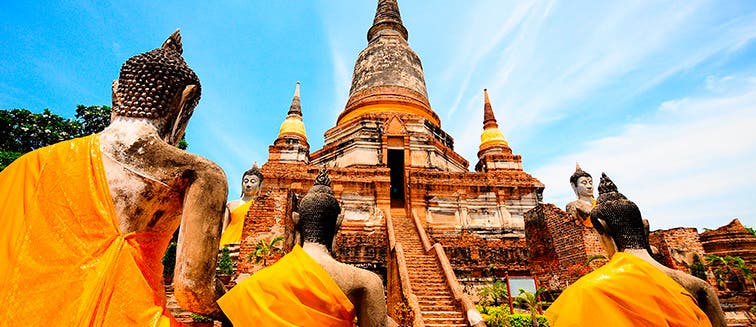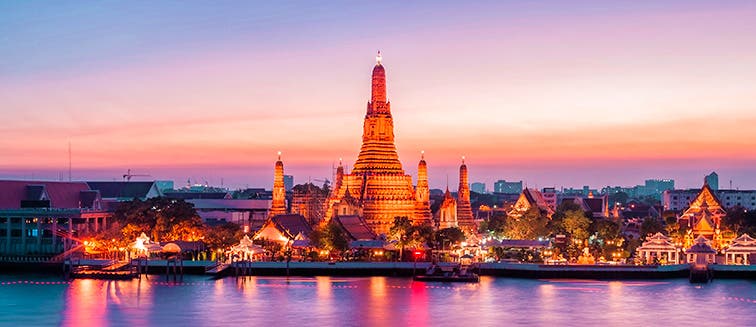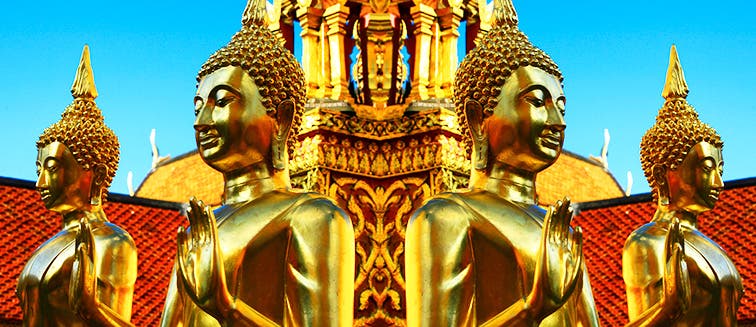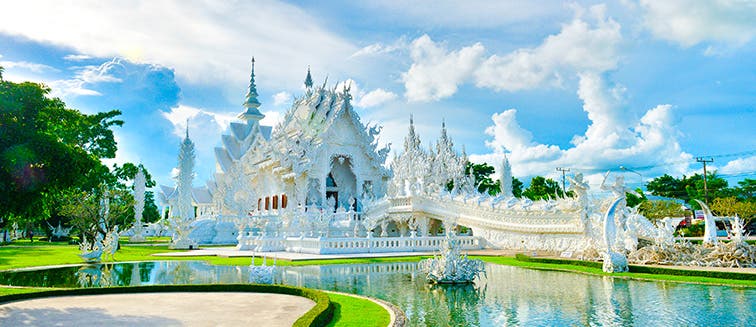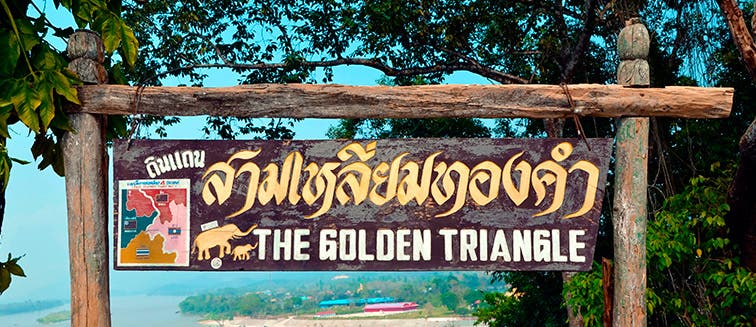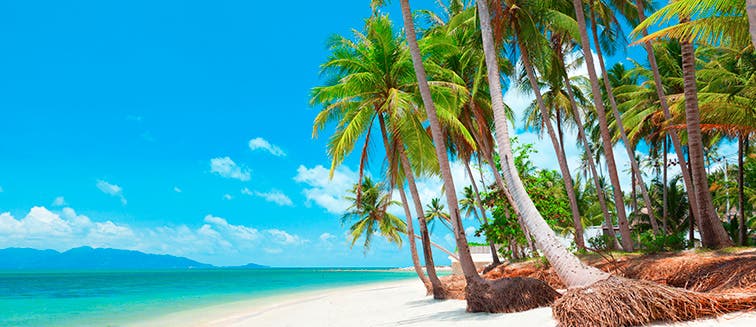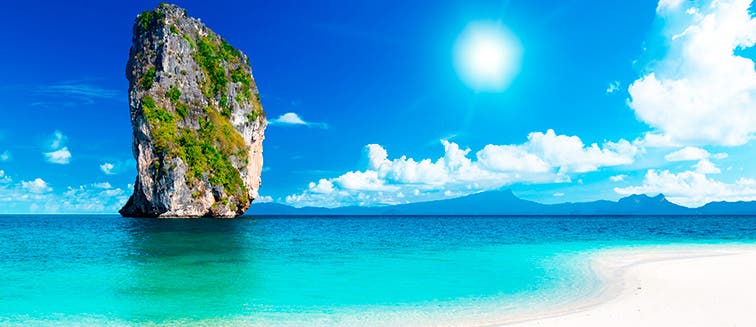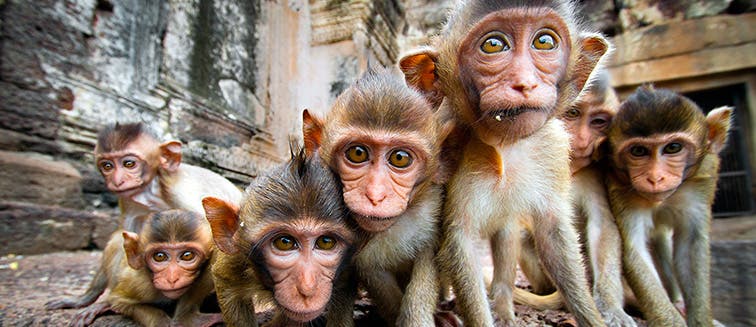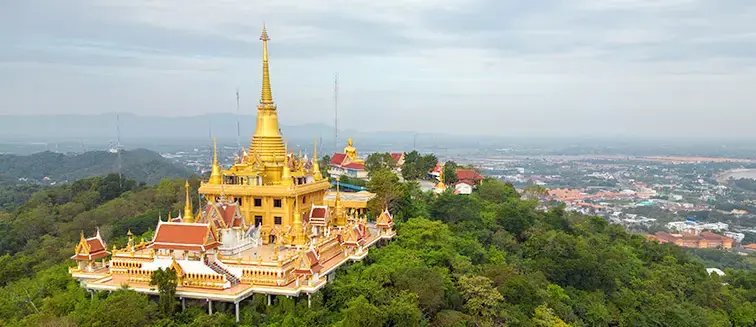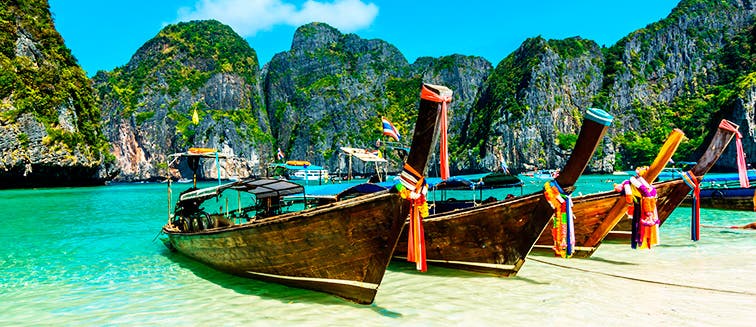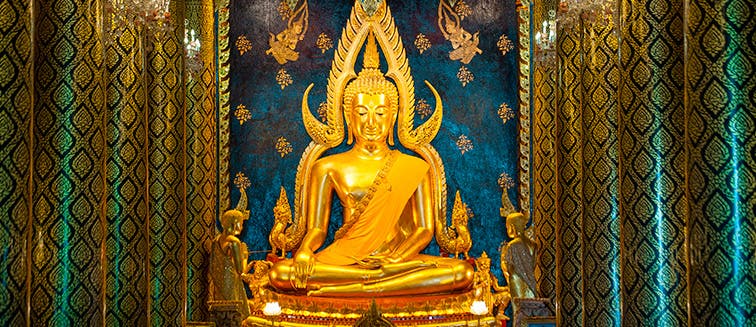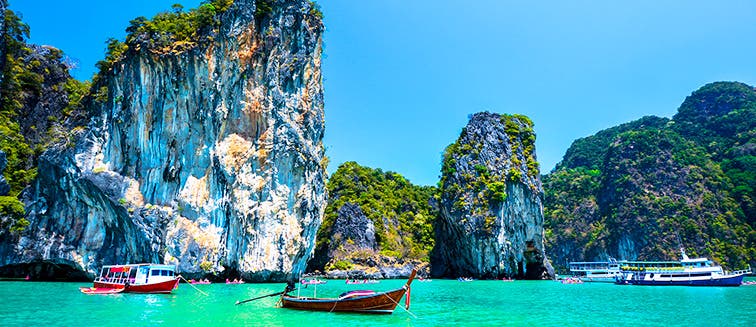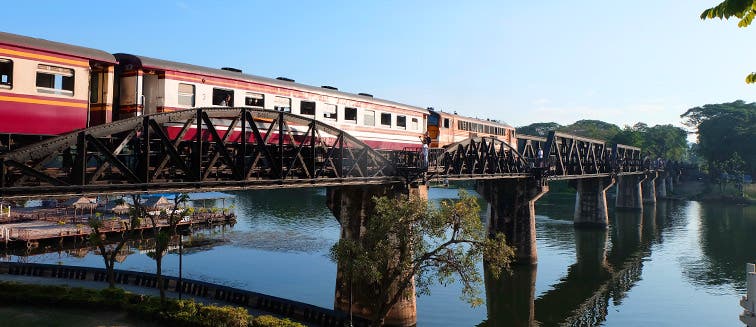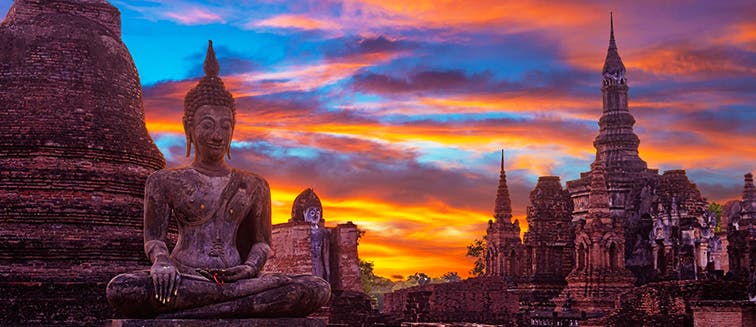Africa
Americas
Asia
Europe
Oceania
By Season
By Interest
By Group
Call us for free now
Book with an expert for free:
+44 20 8068 3176
Prefer us to call you? Drop your number in the box:
24 hours a day, 7 days a week
What to see in Thailand
Chiang Rai
Tourist attractions Chiang Rai
Chiang Rai is a mountainous region in northern Thailand, bordering Laos and Myanmar. In it, the city of the same name, is the second most important in the northern area and one of the most popular in the country, 800 km from Bangkok and 190 km northeast of Chiang Mai.
With almost 80000 inhabitants, it is relatively small and traditional, since the culture and the native customs are shown in most authentic state, without the deformation that often results from increased tourism. Its charm also resides in the surroundings; the love of nature is a maxim among its friendly inhabitants. Its privileged location in an idyllic natural environment of imposing mountains and dense jungle, allows visitors on a tour of Chiang Rai to enjoy multiple activities such as bathing in thermal waters and waterfalls, rafting, hiking, cycling or visiting the mountain tribes.
King Mengrai established in Chiang Rai the capital of the Kingdom of Lanna in 1262. His bronze statue stands beside a golden trident symbolising power and is widely visited and venerated by Thais.
The Clock Tower is another interesting monument located at the intersection of two streets in the centre of the city and dedicated to the last King Rama IX. In the afternoon and until ten o'clock at night, every hour, a piece of traditional music sounds while coloured lights light up the facade.
Getting lost in the downtown night bazaar to enjoy the good atmosphere of the city and mingle with the locals is an excellent way to spend an evening. This market is the smaller version of the one found in Chiang Mai and like it, there are stalls where you can buy souvenirs, street performers, restaurants and cheap food stalls where you can taste the famous gastronomy of the north while listening to traditional live music.
Like any famous Thai city, Chiang Rai abounds with temples, which are part of the day to day life of its inhabitants. Among the most interesting is the surprising Blue Temple or Wat Rong Suea Ten, recently remodeled. The combination of red colours on the roofs and indigo with gold on the facades gives it a unique look in comparison to other temples. Two enormous nagas guard the entrance and inside, an impressive white statue of Buddha, illuminated with blue lights and surrounded by beautiful murals, meditates peacefully; Phra That Doi Wat Chom Thong, located on top of a hill near the river Kok with a golden stupa, inside which the oldest city relics are preserved; the Wat Phra Kaew is the most revered and important of the province since in 1434 it was revealed that the octagonal chedi contained the famous Emerald Buddha, which today can be found in the Grand Palace in Bangkok; Finally, Wat Phra Sing, is prized for its sensational wooden carvings and vaulted ceilings.
12 km north of the city, is one of the architectural wonders of Chiang Rai, the Black House or Baan Dum Museum. Built in the 80s by Duchanee, it was the residence of this prestigious and multifaceted Thai architect until his death. It is a complex that houses gardens and 40 cabins built from dark wood and decorated inside with furniture and pieces including skins, skulls and skeletons of animals with horns that give it a certain sinister air. The artist wanted to express the two antagonistic realities of this world, life and death, in which the human being is immersed, and to demonstrate that his existence on this planet is temporary and therefore he should not feel an attachment to the material.
The Black Temple is the counterpoint to the White Temple or Wat Rong Khun the other most representative monument of Chiang Rai, located 14 km north of the city. This undisputed icon of the country is the work of avant-garde Thai architect Kositpipat, which began construction in 1997 and still remains unfinished.
With an ornate architectural design, the temple has exquisite facades and roofs at three heights typical of the north of the country and covered with millions of tiny crystals, which represent the Buddha's wisdom and give a more resplendent finish in the sunlight.
It is reflected in a heavenly way on the waters of the pond that rests at its feet and its purely white immaculate colour symbolizes the purity of Buddhism.
It is a very artistic creation, unique with some frankly extravagant details, like the skulls and the dozens of crowded forearms that emerge from the ground and stretch their hands to the sky desperately seeking alms. The bridge that gives access to the central room of the main building is flanked by two great guardians in a threatening position wielding their daggers.
The white of the exterior contrasts with the burst of colour of the interior, where the modern murals of pop aesthetics mix fictional and historical characters, distancing themselves from the traditional Thai style, reason for numerous criticisms. And all under the watchful eye of a white Buddha.
Even the bathrooms are unique, housed in a beautiful independent golden building that looks like a temple. In the gardens of the enclosure, you can see sculptures of heads with terrifying faces of real or invented beings hanging from the trunks of the trees.
The artist sends continuous messages to the visitor; it is interpreted that in order to reach Nirvana one has to go through the various hardships of life and in the intimate space through his paintings, he makes a plea against war and violence and in favour of respect for Buddhist teachings and reaffirms the fulfilment of the law of karma and our connection to the universe.
What is clear is that the White Temple of Chiang Rai is an intense place, where visitors can leave their earthly reality for a moment, provoking an introspective reflection. It certainly leaves no visitor feeling indifferent towards their visit.
Although Chiang Mai takes centre stage, the truth is that travelling to Chiang Rai presents visitors with a pleasant surprise on the way to the north of the Kingdom of Siam, which deserves to be explored because it is one of the cornerstones of the history and culture of the country of smiles.
OUR BEST TRIPS TO CHIANG RAI
YOU ALSO LIKE
Cambodia
6 Trips
Indonesia
4 Trips
Laos
1 Trips
Malaysia
2 Trips
Myanmar
Notify me when available
Philippines
4 Trips
Singapore
2 Trips
Thailand
11 Trips
Vietnam
9 Trips
Jordan
7 Trips
Israel
Notify me when available
Armenia
Notify me when available
Uzbekistan
1 Trips
Oman
1 Trips
![]()
![]()
Lebanon
Notify me when available
Kazakhstan
Notify me when available
Kyrgyzstan
Notify me when available
India
10 Trips
Bhutan
Notify me when available
Turkey
8 Trips
Nepal
3 Trips
Sri Lanka
1 Trips
Maldives
4 Trips
United Arab Emirates
4 Trips
![]()
![]()
Saudi Arabia
1 Trips
China
4 Trips
Japan
7 Trips
Hong Kong
6 Trips
South Korea
1 Trips
Tibet
Notify me when available
Mongolia
Notify me when available
Taiwan
Notify me when available






























































